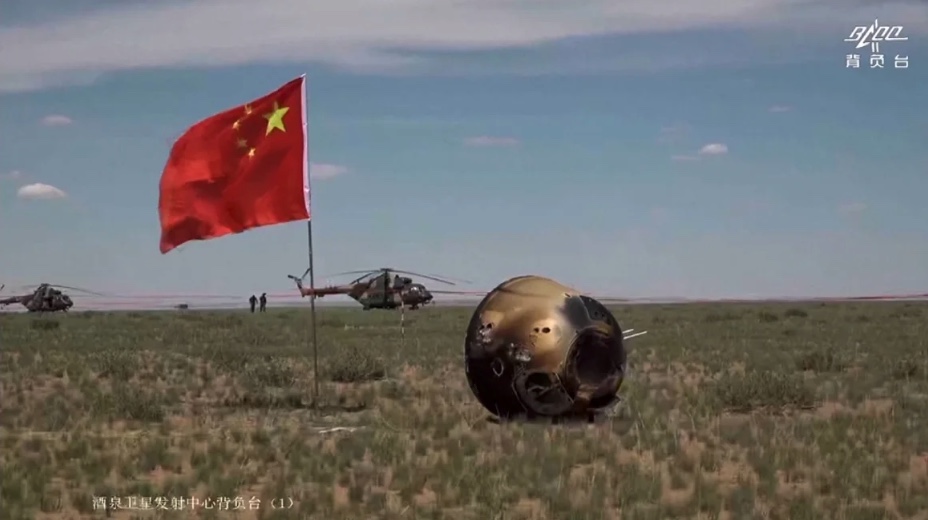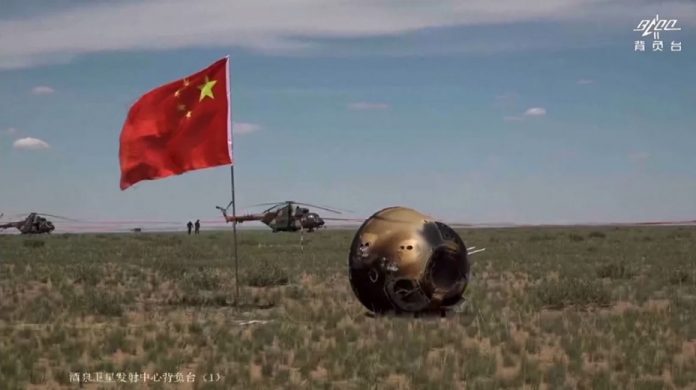โมดูลดวงจันทร์ฉางเอ๋อ-6 (Chang’e-6) ของจีนกลับมายังโลก เสร็จสิ้นภารกิจในการรวบรวมตัวอย่างครั้งแรกจากด้านไกลของดวงจันทร์ โมดูลดังกล่าวลงจอดที่มองโกเลียในเมื่อเวลา 14.00 น. เวลาท้องถิ่น ยืนยันโดยสถานีโทรทัศน์ CCTV ของรัฐ จาง เค่อเจี้ยน หัวหน้า CNSA ชื่นชมความสำเร็จของภารกิจ จีนตั้งเป้าส่งนักบินอวกาศไปยังดวงจันทร์ภายในปี 2573 และสร้างฐานการวิจัยที่ขั้วโลกใต้ของดวงจันทร์ ซึ่งสอดคล้องกับวิสัยทัศน์ของประธานาธิบดีสี จิ้นผิง ในการพัฒนาการสำรวจอวกาศ คาดว่ายานดังกล่าวจะสามารถเก็บตัวอย่างดวงจันทร์ได้มากถึง 2 กิโลกรัม เพื่อการวิเคราะห์โดยนักวิทยาศาสตร์ชาวจีนและนานาชาติ ตามรายงานของ CNSA
การวิเคราะห์ตัวอย่างเหล่านี้สามารถปลดล็อกข้อมูลเชิงลึกเกี่ยวกับวิวัฒนาการของดวงจันทร์ โลก และระบบสุริยะ ซึ่งสนับสนุนความพยายามในการใช้ทรัพยากรบนดวงจันทร์ของจีน ผู้เชี่ยวชาญแนะนำ เก็บรวบรวมโดยใช้สว่านและแขนหุ่นยนต์จากแอ่งขั้วโลกใต้-เอตเคน (South Pole-Aitken) บนอีกฟากหนึ่งของดวงจันทร์ ซึ่งก่อตัวเมื่อประมาณ 4 พันล้านปีก่อน ตัวอย่างเหล่านี้ถูกย้ายจากวงโคจรดวงจันทร์มายังโลกโดยยานขึ้นและลงสู่พื้นโลก ฉางเอ๋อ-6 ซึ่งเป็นภารกิจที่ซับซ้อนที่สุดของจีน ได้รับการติดตามอย่างใกล้ชิดนับตั้งแต่ปล่อยจรวดเมื่อวันที่ 3 พฤษภาคม ภาพการลงจอดบนดวงจันทร์พร้อมธงชาติจีน และตัวอักษร “จง” ที่สลักอยู่บนดวงจันทร์ ได้ถูกเผยแพร่อย่างกว้างขวางบนโซเชียลมีเดียของจีนเมื่อเร็ว ๆ นี้ การกลับมาของโมดูลดังกล่าวเกิดขึ้นหลังจากรายงานชิ้นส่วนที่ต้องสงสัยจากจรวดของจีนอีกลำที่ตกลงทางตะวันตกเฉียงใต้ของจีนเมื่อวันเสาร์ที่ผ่านมา ทำให้เกิดความกังวลและทำให้ชาวบ้านต้องหลบหนี ดังที่แสดงในวิดีโอบนโซเชียลมีเดียของจีนและรายงานโดยพยานท้องถิ่น
ฉางเอ๋อ-6 มีเป้าหมายในการสำรวจทรัพยากรบนดวงจันทร์ผ่านการวิเคราะห์ตัวอย่าง ซึ่งอาจเป็นประโยชน์ต่อการพิมพ์ 3 มิติและการสกัดก๊าซ เช่น ฮีเลียม-3 ออกซิเจน และไฮโดรเจน นักวิทยาศาสตร์ชาวจีนจะร่วมมือกันในระดับนานาชาติและเปิดให้เข้าถึงตัวอย่างตามแบบจำลอง Chang’e-5 ภารกิจนี้แสดงให้เห็นถึงก้าวสำคัญในการสำรวจดวงจันทร์ของจีน ซึ่งสอดคล้องกับเป้าหมายในการลงจอดนักบินอวกาศบนดวงจันทร์ คล้ายกับภารกิจอาร์เทมิสของสหรัฐฯ ที่วางแผนไว้ในปี 2569 จีนเน้นย้ำความพยายามด้านอวกาศของตนเพื่อสร้างประโยชน์ให้กับมนุษยชาติ โดยแสวงหาพันธมิตรระหว่างประเทศสำหรับสถานีวิจัยดวงจันทร์ ทั้งสองประเทศมองว่าภารกิจบนดวงจันทร์เป็นกุญแจสำคัญในการสำรวจศักดิ์ศรี วิทยาศาสตร์ และทรัพยากรของชาติ แผนในอนาคต ได้แก่ ฉางเอ๋อ-7 ในปี 2569 โดยกำหนดเป้าหมายไปที่ขั้วโลกใต้ของดวงจันทร์ และฉางเอ๋อ-8 ในปี 2571 เพื่อทดสอบการใช้ทรัพยากรบนดวงจันทร์สำหรับสถานีวิจัย ตามการระบุของหน่วยงานอวกาศของจีน
China’s Chang’e-6 moon mission returns to Earth with historic samples from the far side of the moon

China’s Chang’e-6 lunar module returned to Earth, completing its mission to gather the first-ever samples from the moon’s far side. The module landed in Inner Mongolia at 2 p.m. local time, confirmed by state broadcaster CCTV. Zhang Kejian, head of CNSA, hailed the mission’s success. China aims to send astronauts to the moon by 2030 and establish a research base at the lunar south pole, aligning with President Xi Jinping’s vision of advancing space exploration. The probe is expected to have retrieved up to 2 kilograms of lunar samples for analysis by Chinese and international scientists, according to CNSA.
Analysis of these samples could unlock insights into lunar, Earth, and solar system evolution, aiding China’s lunar resource utilisation efforts, experts suggest. Collected using a drill and robotic arm from the South Pole-Aitken basin on the moon’s far side, formed about 4 billion years ago, the samples were then transferred from lunar orbit to Earth by an ascender and re-entry vehicle. Chang’e-6, China’s most complex mission yet, has been closely followed since its May 3 launch. Images of the lunar lander with the Chinese flag and the character “zhong” etched on the moon circulated widely on Chinese social media recently. The module’s return follows reports of suspected debris from another Chinese rocket falling in southwest China last Saturday, causing concern and prompting villagers to flee, as shown in videos on Chinese social media and reported by a local witness.
Chang’e-6 aims to explore lunar resources through sample analysis, potentially benefiting 3-D printing and gas extraction like Helium-3, oxygen, and hydrogen. Chinese scientists will collaborate internationally and open sample access following the Chang’e-5 model. This mission represents a crucial step in China’s lunar exploration, aligned with its goal to land astronauts on the moon, akin to the US Artemis mission planned for 2026. China emphasises its space efforts to benefit humanity, seeking international partners for a lunar research station. Both countries see moon missions as key for national prestige, science, and resource exploration. Future plans include Chang’e-7 in 2026, targeting the lunar south pole, and Chang’e-8 in 2028 to test lunar resource utilisation for the research station, according to Chinese space authorities.
By CNN NEWS

















